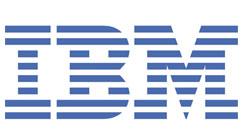 On the surface, the so-called “Internet of Things” holds a lot of appeal to businesses. Think about it: Millions of sensors and mobile devices feeding data to complex-yet-efficient analytics platforms, which produce piercing insights that can be used to boost revenue, make workflows more efficient, and improve executive decisions. The problem comes in building those analytics platforms—it takes a lot of very smart engineers to craft a system that can digest all that data and produce something meaningful in a somewhat-speedy manner. IBM is the latest to jump into that particular ring with its MessageSight appliance, designed to farm data from “smart buildings” and traffic-management systems to household appliances and automobile dashboards. IBM likes to cite a report from IMS Research suggesting that, over the next eight years, some 22 billion devices will be connected to the Web in some fashion, producing some 2.5 quintillion bytes of new data on a daily basis. IBM positions MessageSight as the first in what could be a long line of products designed to handle that data-load; the system can support one million concurrent sensors or smart devices, and handle up to 13 million messages every second. IBM MessageSight is built atop Message Queuing Telemetry Transport (MQTT) technology, which is also used by Facebook Messenger and other messaging platforms. IBM is integrating MessageSight into its MobileFirst portfolio, which includes mobile apps and support software. IBM is boosting MobileFirst’s capabilities, as well, with new geo-location services and tools for monitoring battery and network bandwidth. IBM isn’t the only company investing in sensors and analytics. General Electric has loudly touted its research into software that can surface and analyze data from industrial process; the resulting tools include Proficy Vision, which brings together Web-based data from GE’s Proficy analytics platform with third-party displays, providing (in theory) a single viewpoint into operations. Automobiles have been at the forefront of this sensor movement. Last August, the U.S. Department of Transportation and the University of Michigan announced a plan to make cars “talk,” installing a fleet of roughly 3,000 vehicles with DSRC (Dedicated Short Range Communications) devices that would allow them to communicate wirelessly about speed and location. Google is famously working on “driver-free” cars capable of navigating a complicated route without crashing. When Tesla CEO Elon Musk got into a much-publicized battle with a New York Times reporter over a test drive, he furnished sensor data in an attempt to prove his argument. In the context of automobiles, that sensor integration raises some questions about privacy, and whether your jalopy will one day offer the equivalent of a “do not track” option. For those involved in supply-chain management or industrial processes, however, privacy simply isn’t a relevant concern—the only focus is on how the Internet of Things can make life more efficient. Image: Pressmaster
On the surface, the so-called “Internet of Things” holds a lot of appeal to businesses. Think about it: Millions of sensors and mobile devices feeding data to complex-yet-efficient analytics platforms, which produce piercing insights that can be used to boost revenue, make workflows more efficient, and improve executive decisions. The problem comes in building those analytics platforms—it takes a lot of very smart engineers to craft a system that can digest all that data and produce something meaningful in a somewhat-speedy manner. IBM is the latest to jump into that particular ring with its MessageSight appliance, designed to farm data from “smart buildings” and traffic-management systems to household appliances and automobile dashboards. IBM likes to cite a report from IMS Research suggesting that, over the next eight years, some 22 billion devices will be connected to the Web in some fashion, producing some 2.5 quintillion bytes of new data on a daily basis. IBM positions MessageSight as the first in what could be a long line of products designed to handle that data-load; the system can support one million concurrent sensors or smart devices, and handle up to 13 million messages every second. IBM MessageSight is built atop Message Queuing Telemetry Transport (MQTT) technology, which is also used by Facebook Messenger and other messaging platforms. IBM is integrating MessageSight into its MobileFirst portfolio, which includes mobile apps and support software. IBM is boosting MobileFirst’s capabilities, as well, with new geo-location services and tools for monitoring battery and network bandwidth. IBM isn’t the only company investing in sensors and analytics. General Electric has loudly touted its research into software that can surface and analyze data from industrial process; the resulting tools include Proficy Vision, which brings together Web-based data from GE’s Proficy analytics platform with third-party displays, providing (in theory) a single viewpoint into operations. Automobiles have been at the forefront of this sensor movement. Last August, the U.S. Department of Transportation and the University of Michigan announced a plan to make cars “talk,” installing a fleet of roughly 3,000 vehicles with DSRC (Dedicated Short Range Communications) devices that would allow them to communicate wirelessly about speed and location. Google is famously working on “driver-free” cars capable of navigating a complicated route without crashing. When Tesla CEO Elon Musk got into a much-publicized battle with a New York Times reporter over a test drive, he furnished sensor data in an attempt to prove his argument. In the context of automobiles, that sensor integration raises some questions about privacy, and whether your jalopy will one day offer the equivalent of a “do not track” option. For those involved in supply-chain management or industrial processes, however, privacy simply isn’t a relevant concern—the only focus is on how the Internet of Things can make life more efficient. Image: Pressmaster IBM’s MessageSight and the Internet of Things
 On the surface, the so-called “Internet of Things” holds a lot of appeal to businesses. Think about it: Millions of sensors and mobile devices feeding data to complex-yet-efficient analytics platforms, which produce piercing insights that can be used to boost revenue, make workflows more efficient, and improve executive decisions. The problem comes in building those analytics platforms—it takes a lot of very smart engineers to craft a system that can digest all that data and produce something meaningful in a somewhat-speedy manner. IBM is the latest to jump into that particular ring with its MessageSight appliance, designed to farm data from “smart buildings” and traffic-management systems to household appliances and automobile dashboards. IBM likes to cite a report from IMS Research suggesting that, over the next eight years, some 22 billion devices will be connected to the Web in some fashion, producing some 2.5 quintillion bytes of new data on a daily basis. IBM positions MessageSight as the first in what could be a long line of products designed to handle that data-load; the system can support one million concurrent sensors or smart devices, and handle up to 13 million messages every second. IBM MessageSight is built atop Message Queuing Telemetry Transport (MQTT) technology, which is also used by Facebook Messenger and other messaging platforms. IBM is integrating MessageSight into its MobileFirst portfolio, which includes mobile apps and support software. IBM is boosting MobileFirst’s capabilities, as well, with new geo-location services and tools for monitoring battery and network bandwidth. IBM isn’t the only company investing in sensors and analytics. General Electric has loudly touted its research into software that can surface and analyze data from industrial process; the resulting tools include Proficy Vision, which brings together Web-based data from GE’s Proficy analytics platform with third-party displays, providing (in theory) a single viewpoint into operations. Automobiles have been at the forefront of this sensor movement. Last August, the U.S. Department of Transportation and the University of Michigan announced a plan to make cars “talk,” installing a fleet of roughly 3,000 vehicles with DSRC (Dedicated Short Range Communications) devices that would allow them to communicate wirelessly about speed and location. Google is famously working on “driver-free” cars capable of navigating a complicated route without crashing. When Tesla CEO Elon Musk got into a much-publicized battle with a New York Times reporter over a test drive, he furnished sensor data in an attempt to prove his argument. In the context of automobiles, that sensor integration raises some questions about privacy, and whether your jalopy will one day offer the equivalent of a “do not track” option. For those involved in supply-chain management or industrial processes, however, privacy simply isn’t a relevant concern—the only focus is on how the Internet of Things can make life more efficient. Image: Pressmaster
On the surface, the so-called “Internet of Things” holds a lot of appeal to businesses. Think about it: Millions of sensors and mobile devices feeding data to complex-yet-efficient analytics platforms, which produce piercing insights that can be used to boost revenue, make workflows more efficient, and improve executive decisions. The problem comes in building those analytics platforms—it takes a lot of very smart engineers to craft a system that can digest all that data and produce something meaningful in a somewhat-speedy manner. IBM is the latest to jump into that particular ring with its MessageSight appliance, designed to farm data from “smart buildings” and traffic-management systems to household appliances and automobile dashboards. IBM likes to cite a report from IMS Research suggesting that, over the next eight years, some 22 billion devices will be connected to the Web in some fashion, producing some 2.5 quintillion bytes of new data on a daily basis. IBM positions MessageSight as the first in what could be a long line of products designed to handle that data-load; the system can support one million concurrent sensors or smart devices, and handle up to 13 million messages every second. IBM MessageSight is built atop Message Queuing Telemetry Transport (MQTT) technology, which is also used by Facebook Messenger and other messaging platforms. IBM is integrating MessageSight into its MobileFirst portfolio, which includes mobile apps and support software. IBM is boosting MobileFirst’s capabilities, as well, with new geo-location services and tools for monitoring battery and network bandwidth. IBM isn’t the only company investing in sensors and analytics. General Electric has loudly touted its research into software that can surface and analyze data from industrial process; the resulting tools include Proficy Vision, which brings together Web-based data from GE’s Proficy analytics platform with third-party displays, providing (in theory) a single viewpoint into operations. Automobiles have been at the forefront of this sensor movement. Last August, the U.S. Department of Transportation and the University of Michigan announced a plan to make cars “talk,” installing a fleet of roughly 3,000 vehicles with DSRC (Dedicated Short Range Communications) devices that would allow them to communicate wirelessly about speed and location. Google is famously working on “driver-free” cars capable of navigating a complicated route without crashing. When Tesla CEO Elon Musk got into a much-publicized battle with a New York Times reporter over a test drive, he furnished sensor data in an attempt to prove his argument. In the context of automobiles, that sensor integration raises some questions about privacy, and whether your jalopy will one day offer the equivalent of a “do not track” option. For those involved in supply-chain management or industrial processes, however, privacy simply isn’t a relevant concern—the only focus is on how the Internet of Things can make life more efficient. Image: Pressmaster 